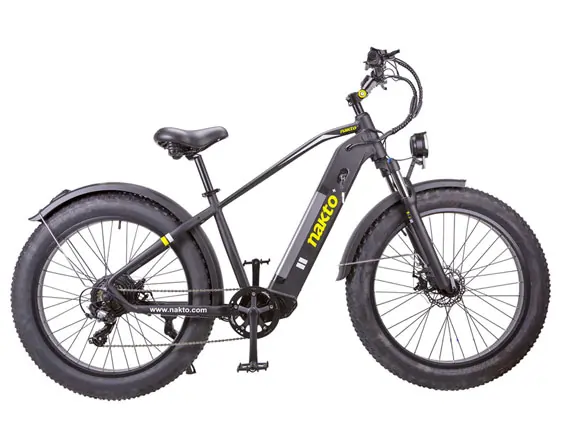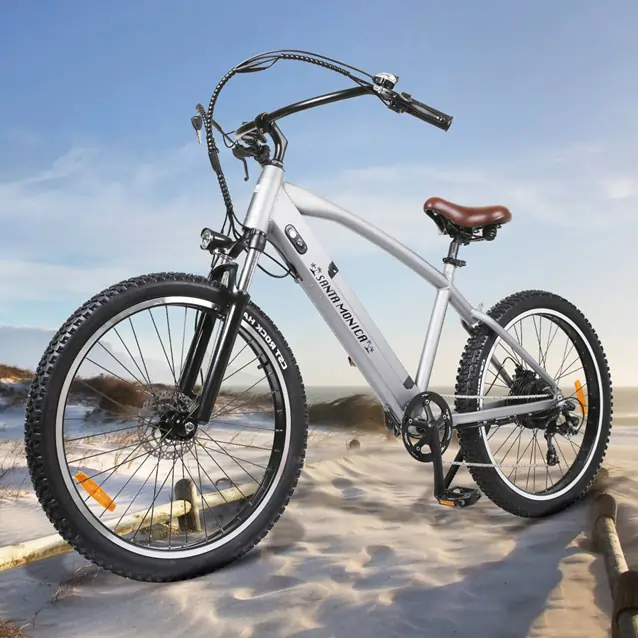Kids’ Electric Bikes: Everything Parents Need to Know
Kids electric bike is an exciting frontier in the world of juvenile transportation. Combining the traditional joy of biking with the modern advances in electric motors, these bikes offer a unique blend of fun, exercise, and technology. They are increasingly becoming a popular choice among children and parents alike, symbolizing a shift towards more eco-friendly and tech-savvy modes of transport. This article delves into the world of kids’ electric bikes, exploring their features, safety aspects, and how to choose the right one for your child.

Understanding Kids’ Electric Bikes
Features, Sizes, and What Makes Them Special
Kids’ electric bikes merge the timeless appeal of cycling with the thrill and ease of modern technology. These bikes are equipped with an electric motor that assists in pedaling, making cycling less physically demanding and more enjoyable for children. Here, we delve deeper into the various aspects that make these bikes unique and desirable for young riders.
Key Features
Motor Power and Assistance
Kids’ electric bikes typically feature a motor that provides assistance when pedaling. The power of these motors, usually measured in watts, varies depending on the bike model. It’s crucial to understand how this motor assistance works – some models offer a boost with each pedal, while others may have a throttle to control the motor power directly.
Speed and Control
The speed of electric bikes is a crucial aspect, especially for kids. Many models come with speed limiters or settings that parents can adjust to ensure the bike is safe for the child’s age and riding ability. This feature helps maintain a balance between excitement and safety.
Battery Life and Range
The battery is the heart of an electric bike. It’s important to consider the battery life and range, as these determine how far the bike can go on a single charge. Battery life varies widely among models, and it’s essential to choose one that aligns with the child’s usage patterns.
Age-Appropriate Sizes and Fit
Just like traditional bikes, the size of an electric bike should be appropriate for the child’s height and inseam measurement. Adjustable seats and handlebars are beneficial for growing kids, ensuring the bike can be used comfortably over several years. For younger children, an electric balance bike might be an ideal starting point.
As children grow, their electric bike should grow with them. Models designed with adjustable components cater to this need, allowing for a seamless transition as the child gets taller and gains more riding experience.
The Special Appeal of Electric Bikes for Kids
- Encouraging Physical Activity with Ease: While the motor provides assistance, riding an electric bike still involves physical activity. It’s a great way to encourage exercise in a fun and engaging way, especially for kids who might find traditional biking more challenging.
- Building Confidence and Independence: Electric bikes can help build confidence in children. The assisted pedaling reduces the initial effort required, making it easier for kids to start riding and explore further. This newfound mobility can be a significant boost to their independence and exploration spirit.
- Fun and Engagement: The fun factor of electric bikes cannot be overstated. The blend of traditional biking with the excitement of motor assistance makes for a compelling, enjoyable experience that can keep children engaged for longer periods.

Safety Considerations for Kids’ Electric Bikes
When it comes to kids’ electric bikes, safety is a paramount concern. While these bikes bring a lot of joy and excitement, they also come with unique safety considerations due to their motorized nature. This section aims to deepen the understanding of the various safety aspects and precautions associated with kids’ electric bikes.
- Speed Limiters and Parental Controls: Speed is a critical factor in the safety of electric bikes. Many kids’ electric bikes come with built-in speed limiters, allowing parents to set a maximum speed. This control is crucial for younger or less experienced riders. Parental controls might also include remote shutoff capabilities, adding an extra layer of safety.
- Robust Braking Systems: Reliable brakes are vital for any bike, but even more so for an electric one. Look for bikes with responsive and sturdy braking systems. Disc brakes, for instance, offer superior stopping power and are ideal for electric bikes used in varied terrains.
- Visible and Audible Safety Signals: Visibility is key to safety. Bikes equipped with lights, reflective materials, and even sound-producing devices (like bells or horns) help ensure that the child is seen and heard while riding, especially in low-light conditions or busy areas.
Training and Preparation
Understanding the Bike’s Features: Before letting your child ride, it’s crucial they understand how the bike works. This includes knowing how to operate the throttle, brakes, and any other special features the bike may have. A thorough understanding helps prevent accidents caused by sudden or unexpected bike responses.
Helmet and Protective Gear: A properly fitting helmet is non-negotiable for any bike ride. Additionally, depending on the child’s riding environment and skill level, other protective gear such as knee and elbow pads, gloves, and sturdy shoes should be considered.
Related: Can My Child Ride An Ebike?
Environmental Awareness and Riding Etiquette
Riding Environment: The choice of riding environment should match the child’s skill level. For beginners, a flat and obstacle-free area is ideal. As they gain confidence and skill, they can gradually move to more challenging terrains.
Teaching Road Awareness and Etiquette: For children riding in public spaces, understanding road rules, and bike path etiquette is crucial. This includes learning about right-of-way, signaling turns, and being mindful of pedestrians and other vehicles.
Regular Maintenance Checks
Pre-Ride Inspections: Regular checks of the bike’s components, such as brakes, tires, and electrical systems, ensure that the bike is always in good riding condition. Encourage your child to perform a simple pre-ride check each time they use the bike.
Professional Maintenance: Periodic professional inspections can help identify and rectify issues that might be missed during regular checks. This step is essential to maintain the bike’s performance and safety standards.
Top Picks and Recommendations
When choosing an electric bike for your child, considering various brands that offer unique features and benefits is crucial. Here are three recommended electric bike brands, including Nakto, known for their quality and suitability for different needs:
- Nakto Electric Bikes
- Rad Power Bikes
- Trek Electric Bikes
Choosing the Right Bike
Tailoring the Perfect Electric Bike for Your Child
Selecting the right electric bike for your child involves considering several key factors that align with their needs, skill level, and the intended use of the bike. This section guides you through these considerations to help you make an informed decision.
Key Considerations in Bike Selection
- Power and Performance: The motor’s power should match the child’s age and riding capabilities. For younger or less experienced riders, a lower-powered motor is advisable to ensure safety and ease of control.
- Ease of Use: The bike should be user-friendly, especially for younger children. This includes simple interfaces, intuitive controls for power and braking, and easy-to-reach pedals and handlebars.
- Quality of Suspension: A good suspension system is crucial for comfort, especially if the bike will be used on uneven terrains. It helps absorb shocks and provides a smoother ride, which is particularly important for younger children who might find bumpy rides unsettling.
- Frame Durability: The bike’s frame should be sturdy enough to withstand regular use and the occasional knocks and bumps of childhood play. Materials like aluminum offer a good balance between durability and lightweight.
- Battery Life and Range: Consider how long the bike can operate on a single charge and how far it can travel. This is particularly important for children who might be using their bikes for longer rides or commutes.
Conclusion
Remember, the best bike for your child is one that fits their current abilities and grows with them. Safety, comfort, and the child’s enjoyment should be at the forefront of your choice.
